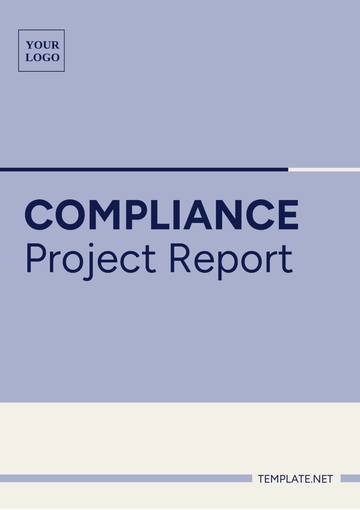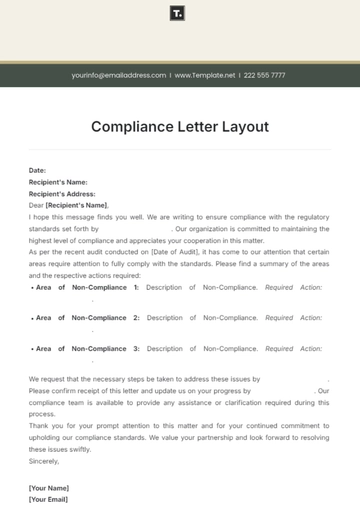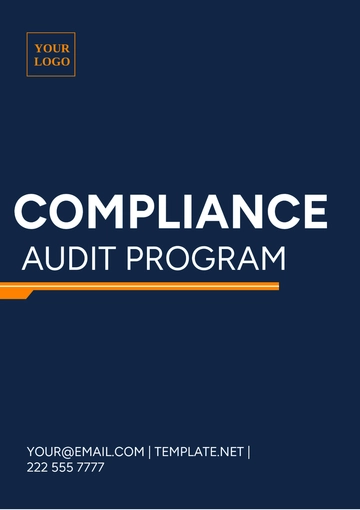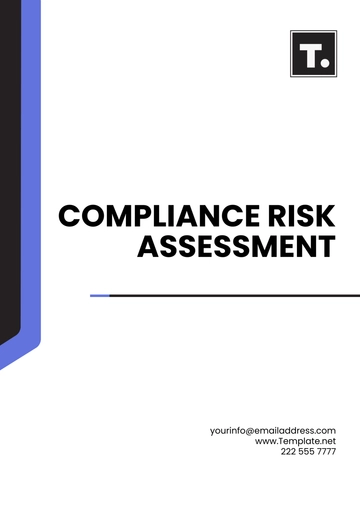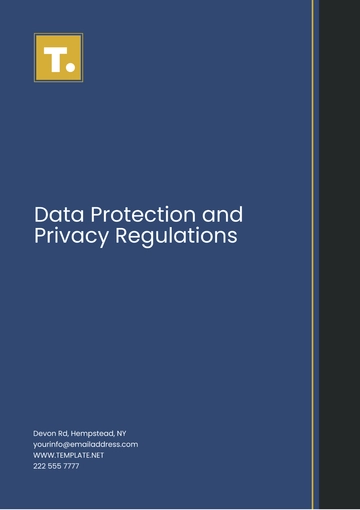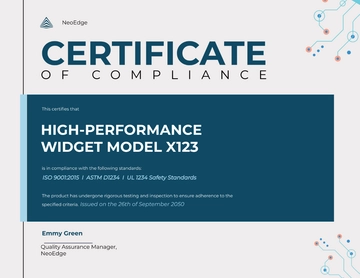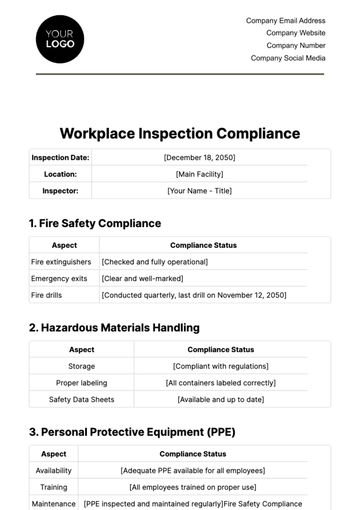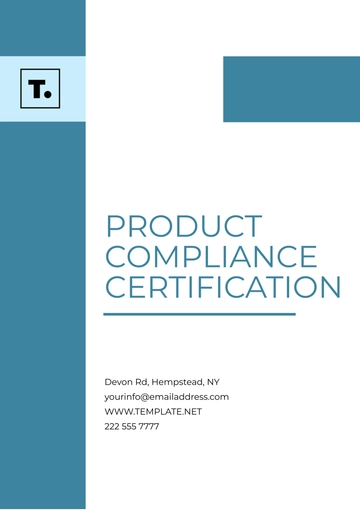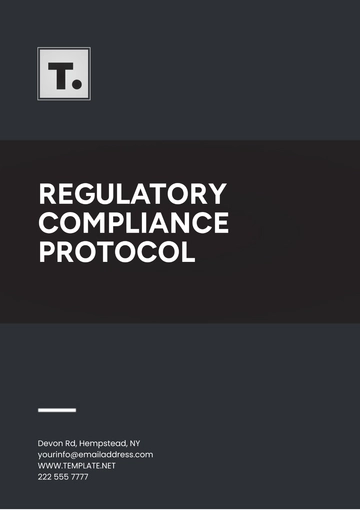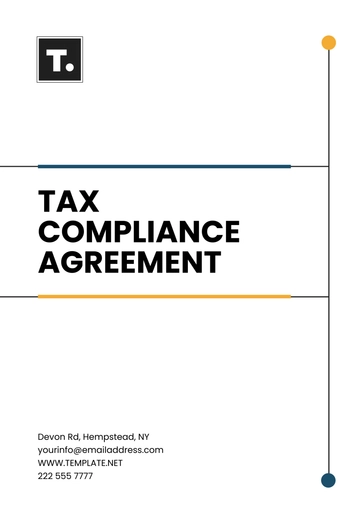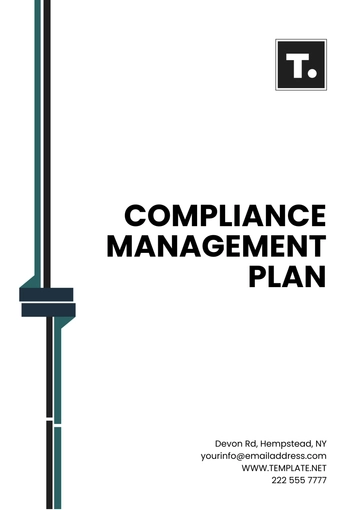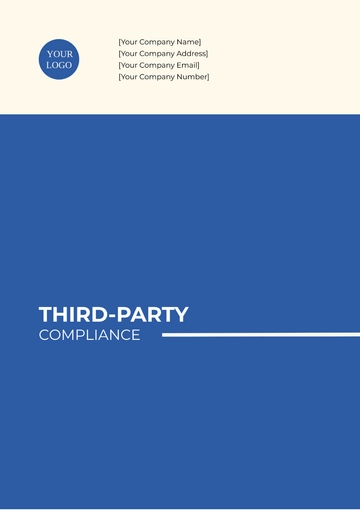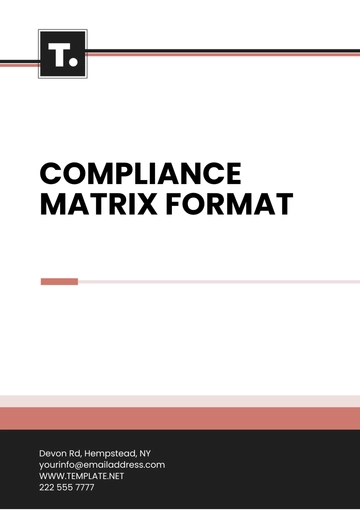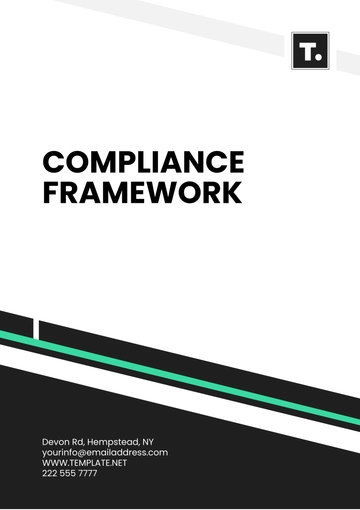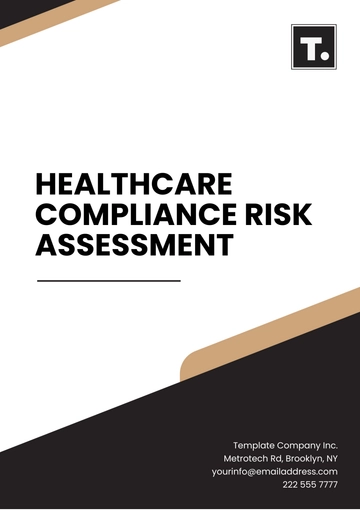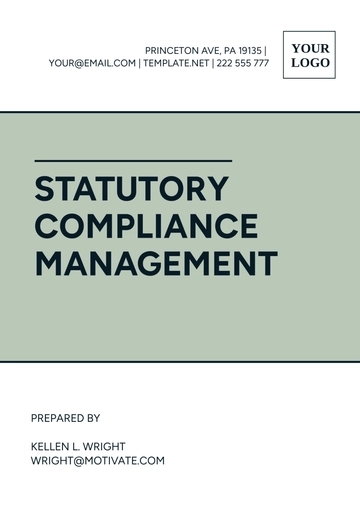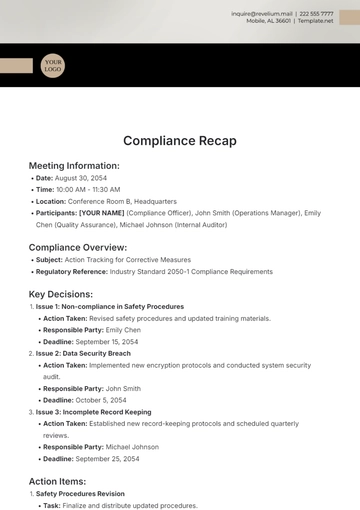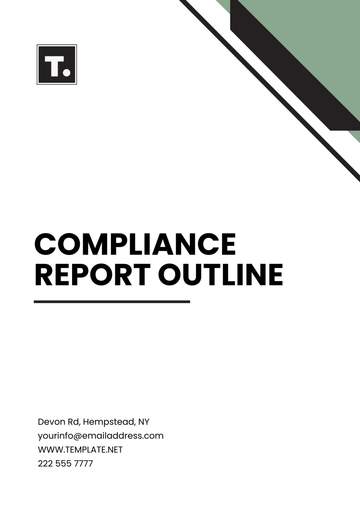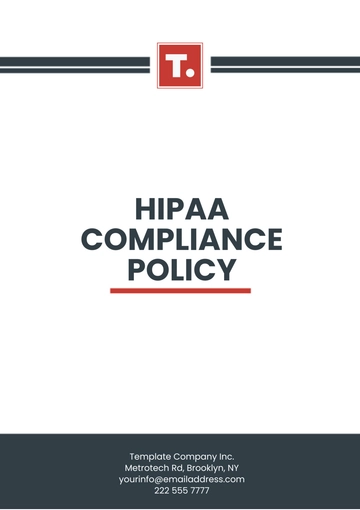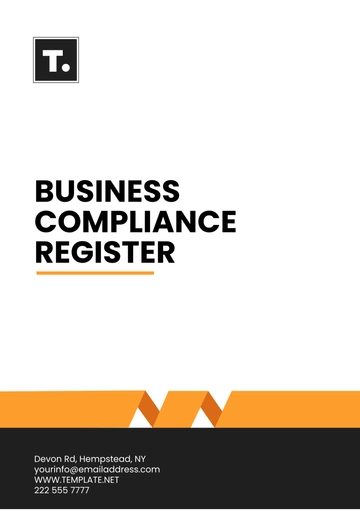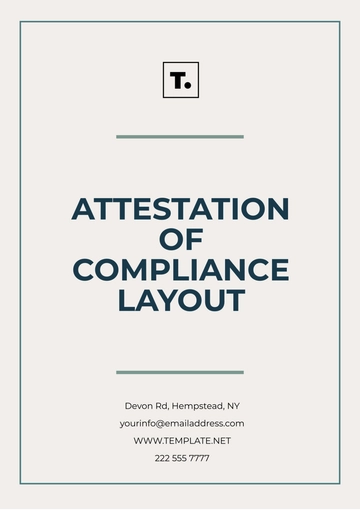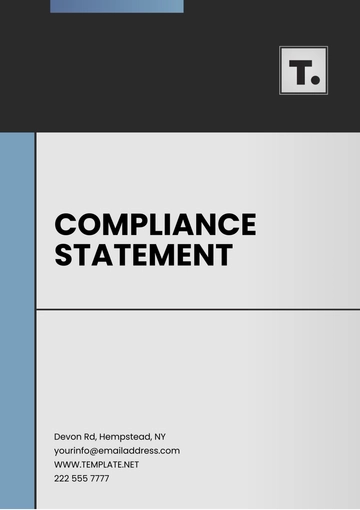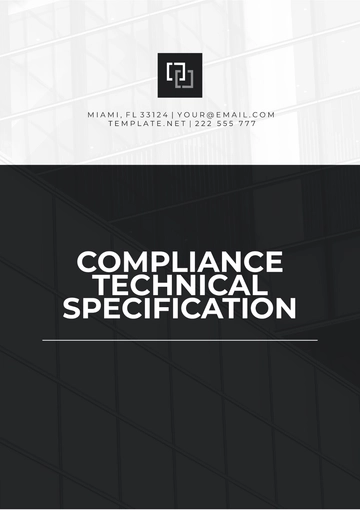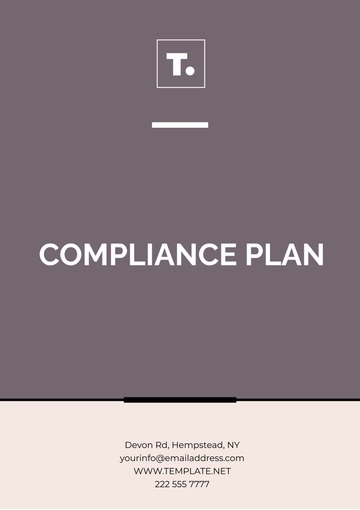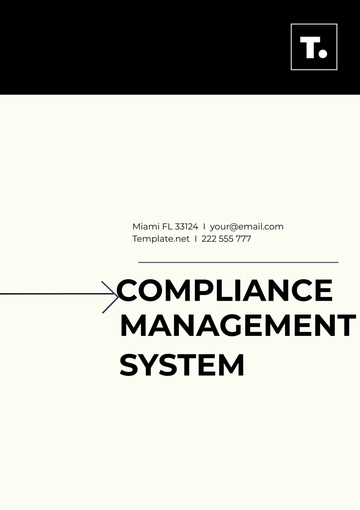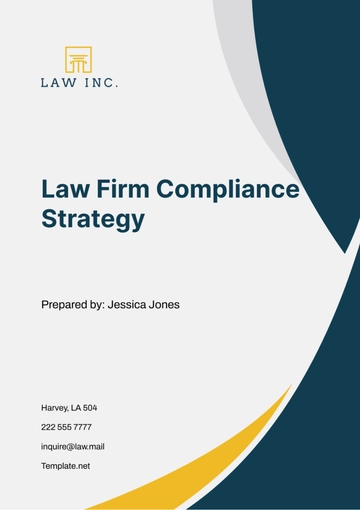Free Compliance Management Policy
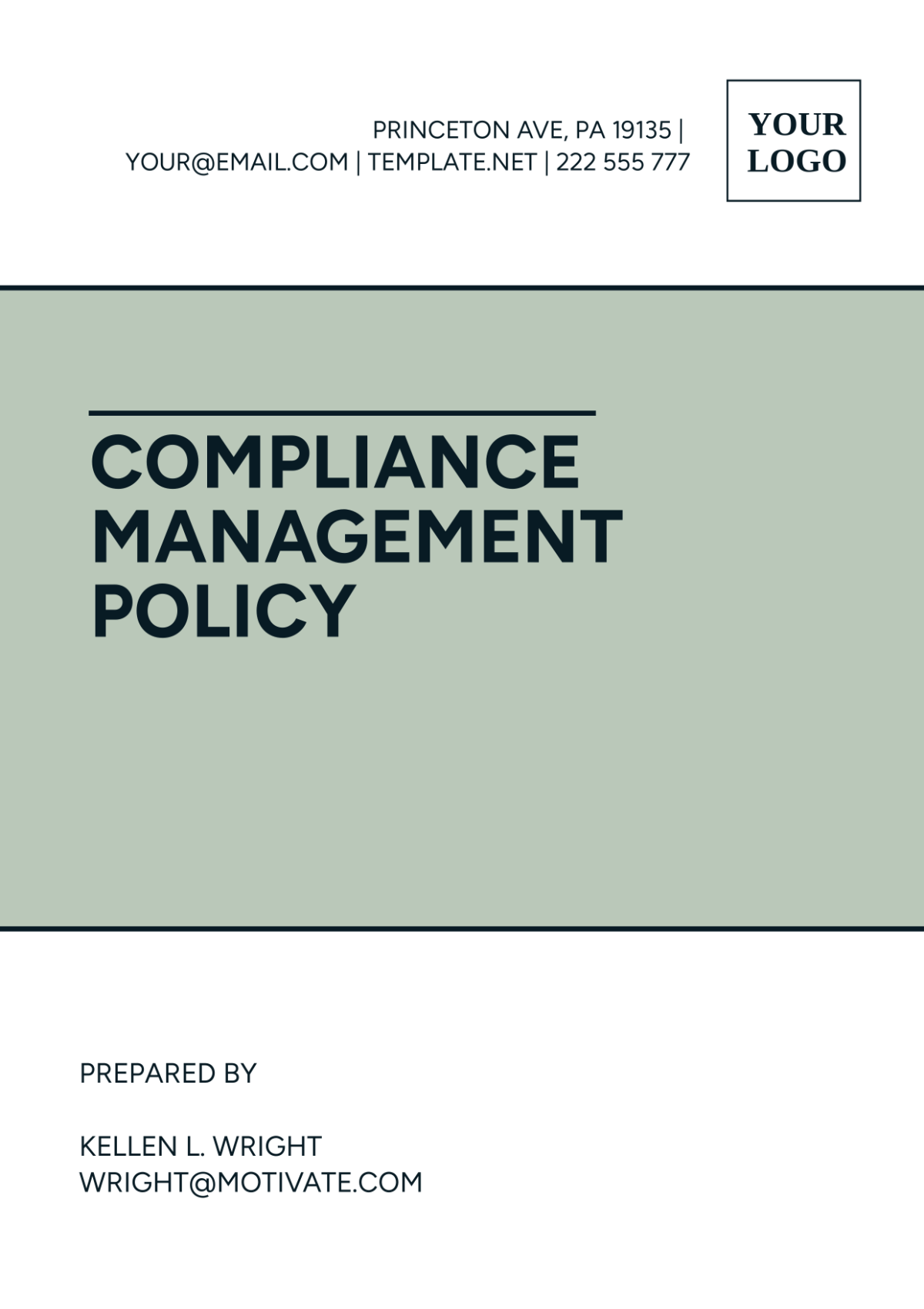
I. Compliance Overview
The Compliance Management Policy outlines the principles and procedures that [Your Company Name] follows to ensure adherence to relevant laws, regulations, and industry standards.
II. Purpose
The primary objective of this policy is to promote ethical conduct, mitigate risks, and maintain the integrity of our operations through effective compliance management.
III. Responsibilities
Defined Responsibilities
All employees are responsible for understanding and adhering to [Your Company Name]'s compliance policies and procedures in their respective roles.
Assignment of compliance officers or team
Compliance officers are designated to oversee compliance activities, provide guidance to employees, and ensure the implementation of compliance measures.
IV. Compliance Standards
List of applicable laws, regulations, and standards
Federal laws (e.g., HIPAA, GDPR)
State regulations (e.g., California Consumer Privacy Act)
Industry standards (e.g., ISO 27001)
Documentation of how compliance standards are communicated to employees
Compliance standards are communicated through employee handbooks, training sessions, and regular updates via company communications channels.
V. Risk Assessment
Procedure for identifying and assessing compliance risks
Regular risk assessments are conducted to identify potential compliance risks associated with our business activities.
Documentation of risk assessment findings
Findings from risk assessments are documented and used to develop mitigation strategies and action plans.
Policies and Procedures
List of specific compliance policies and procedures
Data privacy policy
Anti-corruption policy
Code of conduct
Documentation of regular review and updates to policies
Policies and procedures are reviewed annually or as needed to ensure alignment with changing regulations and business practices.
VI. Training
Training program for employees on compliance policies and procedures
New employees receive comprehensive training on compliance policies and procedures during onboarding, with refresher courses provided periodically.
Documentation of employee training completion
Employee training completion is recorded and maintained in the company's learning management system.
VII. Monitoring and Auditing
Process for monitoring compliance activities
Regular monitoring activities, such as internal audits and compliance checks, are conducted to assess compliance with established policies and procedures.
Schedule for internal audits
Internal audits are scheduled annually, with additional audits conducted as needed based on identified risks or regulatory changes.
Documentation of audit findings and corrective actions
Audit findings, including non-compliance issues, are documented along with corrective actions taken to address identified deficiencies.
VIII. Reporting
Procedure for reporting compliance violations or concerns
Employees are encouraged to report compliance violations or concerns through designated reporting channels, such as the compliance hotline or direct supervisors.
Designated reporting channels
Reporting channels are communicated to employees through company policies and training materials.
Documentation of reported incidents and resolutions
Reported incidents are documented, and investigated, and appropriate actions are taken to address violations and prevent recurrence.
IX. Enforcement
Explanation of disciplinary actions for non-compliance
Disciplinary actions for non-compliance may include verbal warnings, written reprimands, suspension, or termination, depending on the severity and recurrence of the violation.
Documentation of enforcement actions taken
Records of enforcement actions are maintained in employee personnel files for documentation and tracking purposes.
X. Record Keeping
Requirements for record-keeping related to compliance activities
Records related to compliance activities, including training records, audit reports, and incident documentation, are retained by regulatory requirements and company policies.
Storage and retention period for compliance records
Compliance records are stored securely and retained for the period specified in the company's record retention policy, typically ranging from three to seven years.
XI. Continuous Improvement
Process for evaluating and improving the Compliance Management Policy
The Compliance Management Policy is regularly evaluated to assess its effectiveness in achieving compliance objectives and is updated as necessary based on feedback, regulatory changes, and lessons learned.
Documentation of changes made and their effectiveness
Changes to the Compliance Management Policy are documented, communicated to employees, and evaluated for their impact on compliance performance and risk mitigation.
XII. Signature
By signing below, you acknowledge that you have reviewed and understand the contents of this compliance checklist.

Compliance Officer
[Your Company Name]
Date: [INSERT DATE]
- 100% Customizable, free editor
- Access 1 Million+ Templates, photo’s & graphics
- Download or share as a template
- Click and replace photos, graphics, text, backgrounds
- Resize, crop, AI write & more
- Access advanced editor
"Unlock seamless compliance with the Compliance Management Policy Template from Template.net. This meticulously crafted document is not just editable but customizable to suit your unique needs. Whether you're a startup or a seasoned enterprise, streamline your compliance efforts effortlessly. Editable in our AI Editor too, ensuring convenience and efficiency at every step. Stay compliant, stay confident."

